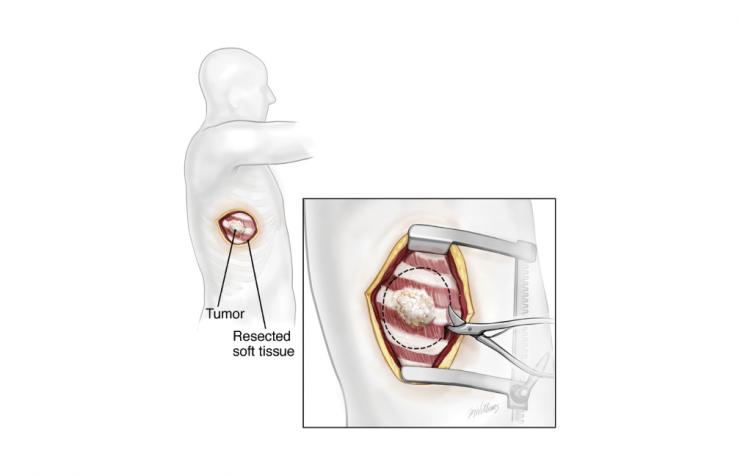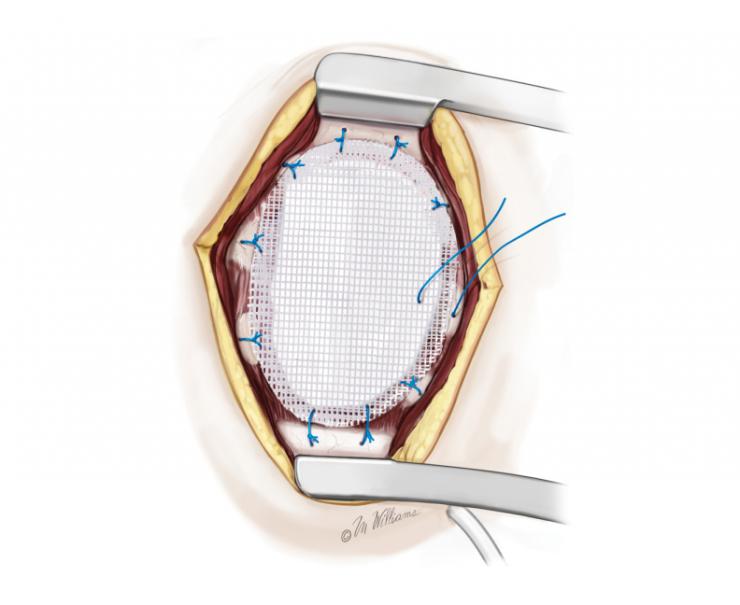Chest wall tumors are uncommon; surgical repair involves both resection of the tumor and reconstruction of the chest structures.
Diagnosis of the tumor is performed to determine whether it is benign or malignant (cancer) and if malignant to determine if it began in the chest wall or metastasized from cancer from another part of the body. If cancer is found, the type of cancer will be determined through a series of tests.
Testing
Needle or incisional biopsy may be performed depending on the location or size of the tumor.
Radiographic tests will be performed to determine if the resection of the tumor is possible and how involved the reconstruction will likely be including use of muscle or omentum (a fatty membrane cover your bowel) flaps and skin grafts. This is done with the assistance of one of our plastic surgeons.
A patient’s age and other health conditions are taken into consideration.
A multidisciplinary tumor board made up of our team will stage your cancer and develop a suitable treatment plan for you.
If surgery is an option, a CT scan of the chest and upper abdomen, and possibly a PET scan will be done.
If tests reveal that the tumor is growing into the lung, pulmonary function studies may also be performed.
Resection
The tumor is removed by wide local incision of the tumor and surrounding tissue. Removal of ribs – usually one rib above and one below the tumor and possibly the sternum – may be needed depending on the size and location of the tumor.
A small drain or chest tube is placed into the chest through a separate incision.
References
Sugarbaker DJ, Bueno R, Krasna MJ, Mentzer SJ, Zellos L (eds). Adult Chest Surgery. New York: The McGraw-Hill Company, 2009.
Gordon MS, Hajdu SI, Bains MS, Burt ME. Soft tissue sarcomas of the chest wall: Results of surgical resection. J Thorac Cardiovasc Surg. 101:843–54, 1991.
LeRoux B, Shama D. Resection of tumors of the chest wall. Curr Probl Surg. 20:345–86, 1983.
Incarbone M, Pastorino U. Surgical treatment of chest wall tumors. World J Surg. 25:218–30, 2001.








 Credit
Credit

